 May
02
May
02
Tags
Women’s Magazines and Ideology Shifts
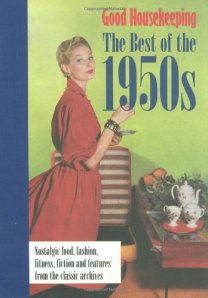 On the 2nd of May 1885, Good Housekeeping magazine was founded by Clark W. Bryan in Holyoke, Massachusetts. Still owned by the Hearst Corporation, it has ever since featured articles about women’s interests, product testing, recipes, diet, health as well as literary articles. It has become an institution known for its “Good Housekeeping Seal of Approval”, which, although mainly referring to material goods and consumer items, could, theoretically, be extended to all aspects of its female readers’ lifestyle. Throughout the years, famous writers contributed to the magazine including Somerset Maugham, Edwin Markham, Edna St. Vincent Millay, Frances Parkinson Keyes, A. J. Cronin, Virginia Woolf, and Evelyn Waugh.
On the 2nd of May 1885, Good Housekeeping magazine was founded by Clark W. Bryan in Holyoke, Massachusetts. Still owned by the Hearst Corporation, it has ever since featured articles about women’s interests, product testing, recipes, diet, health as well as literary articles. It has become an institution known for its “Good Housekeeping Seal of Approval”, which, although mainly referring to material goods and consumer items, could, theoretically, be extended to all aspects of its female readers’ lifestyle. Throughout the years, famous writers contributed to the magazine including Somerset Maugham, Edwin Markham, Edna St. Vincent Millay, Frances Parkinson Keyes, A. J. Cronin, Virginia Woolf, and Evelyn Waugh.
However, one of the most thought-provoking feature articles published by Good Housekeeping was Betty Friedan’s groundbreaking feminist article, ‘Women Are People, Too!’ which appeared in its September 1960 issue. Three years prior to this, Friedan had surveyed two hundred of her Smith College classmates during their 15th anniversary reunion and found that many of them suffered from “the problem that has no name”: supposedly happy homemakers in suburban paradises, which they shared with their working husbands and jolly children, these women were bored, frustrated, depressed and anxious. One reportedly said: “I used to think I was crazy to be so discontented, with a fine husband and children. But there’s more to grow up for than that!” In her article, Friedan wrote: “No woman knows where her search for self-fulfilment will take her. No woman starts that search today without struggle, conflict, and taking her courage in her hands. Maybe growth does not come without conflict. When every woman learns to listen without fear to the voice inside her instead of smothering it, it may lead — perhaps even more surely than rockets into space — to the next step in human evolution. This could come about when women begin to use the education, the freedom, the labour-saving appliances, the added years of life which have become available to them in recent decades.” Friedan’s article thus called for women to challenge and assert themselves outside their domestic cocoon.
 While this may sound obliterated and naïve in current terms, Friedan’s piece caused a massive stir in reconfiguring ideological parameters in the United States as far as gender bias was concerned. It was the catalyst for her future book The Feminine Mystique, published in 1963, which was unprecedented in tackling unexpressed feminist ideas head on. In the following decades, though, we have learned that a more complicated vision of 1950s womanhood emerged in general readership magazines. Joanne Meyerowitz, a Yale historian, showed that that there was more to Friedan’s claim that 1950s magazines represented women in submissive and domestic roles – there were also many depictions of women as active and independent. There has also been abundant criticism of her book for it being classist as directed mainly at middle-class women. In Shaping Our Mothers’ World: American Women’s Magazines, Nancy Walker argued that “rather than presenting a “unitary, cohesive image” of American homelife and gender in mid-century American society, [women’s magazines] acknowledged differences among women, promoted social mobility, and responded to changes in women’s lives.” (Jessica Weiss, review of Shaping Our Mothers’ World: American Women’s Magazines by Nancy A. Walker, in The Journal of American History, Vol. 89, No. 2, History and September 11: A Special Issue, Sep., 2002). Walker wrote that the a great amount of instruction on clothes, domestic life, and manners and the varied content that celebrated women’s achievements indicate that editors assumed diverse female readers with aspirations to middle-class status, many of whom led lives outside the home.
While this may sound obliterated and naïve in current terms, Friedan’s piece caused a massive stir in reconfiguring ideological parameters in the United States as far as gender bias was concerned. It was the catalyst for her future book The Feminine Mystique, published in 1963, which was unprecedented in tackling unexpressed feminist ideas head on. In the following decades, though, we have learned that a more complicated vision of 1950s womanhood emerged in general readership magazines. Joanne Meyerowitz, a Yale historian, showed that that there was more to Friedan’s claim that 1950s magazines represented women in submissive and domestic roles – there were also many depictions of women as active and independent. There has also been abundant criticism of her book for it being classist as directed mainly at middle-class women. In Shaping Our Mothers’ World: American Women’s Magazines, Nancy Walker argued that “rather than presenting a “unitary, cohesive image” of American homelife and gender in mid-century American society, [women’s magazines] acknowledged differences among women, promoted social mobility, and responded to changes in women’s lives.” (Jessica Weiss, review of Shaping Our Mothers’ World: American Women’s Magazines by Nancy A. Walker, in The Journal of American History, Vol. 89, No. 2, History and September 11: A Special Issue, Sep., 2002). Walker wrote that the a great amount of instruction on clothes, domestic life, and manners and the varied content that celebrated women’s achievements indicate that editors assumed diverse female readers with aspirations to middle-class status, many of whom led lives outside the home.
 “How much women’s magazines “shaped our mothers’ world” is debatable, yet they remain an important window into the nation’s attitudes toward gender. Walker’s identification of the social aspirations they marketed in the 1950s, which she connects to mass culture and the Cold War and to magazines’ attempts as business enterprises to accommodate the changes in women’s lives, is significant. By making the homemaker the arbiter of taste and creator of style and luxury, magazines catered to the economic aspirations, creativity, and consumer appetites of homemakers and employed women alike. Selling social aspiration helped navigate a contested transition: as women expanded the definition of the domestic to include employment, how would middle-class status be defined? The women’s magazines placed their hopes with “Mrs. Consumer,” who kept that primary family role even as she supplemented the budget that sup-ported her purchases and through her purchases supported the “American way of life,” as they portrayed it , during the Cold War.” (Jessica Weiss)
“How much women’s magazines “shaped our mothers’ world” is debatable, yet they remain an important window into the nation’s attitudes toward gender. Walker’s identification of the social aspirations they marketed in the 1950s, which she connects to mass culture and the Cold War and to magazines’ attempts as business enterprises to accommodate the changes in women’s lives, is significant. By making the homemaker the arbiter of taste and creator of style and luxury, magazines catered to the economic aspirations, creativity, and consumer appetites of homemakers and employed women alike. Selling social aspiration helped navigate a contested transition: as women expanded the definition of the domestic to include employment, how would middle-class status be defined? The women’s magazines placed their hopes with “Mrs. Consumer,” who kept that primary family role even as she supplemented the budget that sup-ported her purchases and through her purchases supported the “American way of life,” as they portrayed it , during the Cold War.” (Jessica Weiss)
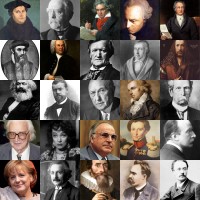



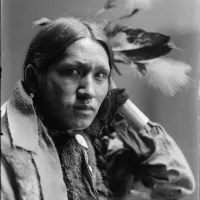
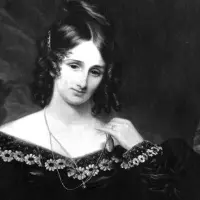
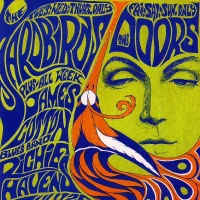
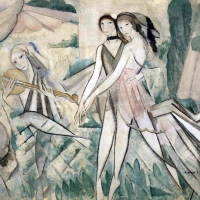

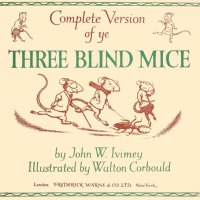
Really interesting and informative article! I’m really curious though… With a fall in readership of all kinds of print media (newspapers and magazines), do you still see magazines as being influential or do you think other medias are important in defining women’s attitudes?
LikeLike
yes, it has all changed since the 1950s and 60s . blogs are now more influential than printed matter 😉
LikeLike
Haha very true! Nice answer 😉 K x
LikeLike
The seven sisters of women’s magazines used to be very powerful influence on women (and indirectly their children and husbands), especially when I was growing up in the 1950s and 1960s. I’m not sure if blogs have completely taken over because there’s plenty of women’s magazines still thriving, but none of them are the seven sisters.
LikeLike
I love this post! I spent quite a lot of my time at Uni delving into feminism and often discussed Betty Frieden in class. P.S. Thank you so much for following my blog!
LikeLike
hello there and thank you for your info – I have certainly picked up anything new from right here.
I did however expertise several technical issues using this site, as
I experienced to reload the web site lots of times previous to I could get it to load properly.
I had been wondering if your web host is OK? Not
that I am complaining, but sluggish loading instances times will sometimes
affect your placement in google and could damage your high-quality score if ads and marketing with Adwords.
Well I am adding this RSS to my e-mail and can look out for a lot more of
your respective intriguing content. Ensure
that you update this again soon.
LikeLike
Reblogged this on rebloggobbler.
LikeLike
Perfect!
LikeLike
Very interesting. I must go and read that article. Being an Australian, I have viewed feminism from a different perspective. Our Australian Women’s Weekly seems quite progressive in many ways. My own experiences are quite distorted as my grandmother was an International concert pianist who had 7 children, a very helpful mother and home help. My other grandmother was a pastor’s wife and in retrospect she was able to use her skills in the Church organising weddings, functions,playing the organ, fundraising. I have copies of some of the speeches she made at functions. While this wasn’t paid work, it was still meaningful work, even if it was within the women’s sphere and not challenging gender stereotypes.
xx Rowena
LikeLike
your view is much appreciated, thank you, Rowena!
LikeLike
Should you utilize DVI or HDMI cable, and, what is
the difference. Have you ever think or wonder if you are able to connect your laptop or PC for your TV or HDTV to exhibit off your latest digital photos for your friends and family.
Hdmi to rca converter cable best buy
LikeLike
You can improve the safety of your property be
reinforcing your windows. Homes built today usually incorporate security technology
in the plan. Home security land s an incredible opportunity to change our care about back-to-school safety considerations.
The essential thing here is that your house is protected always, this means buying one these excellent wireless security alarms Internet cameras when possible.
Most private companies provide the best security device for Home.
LikeLike
うちの近所は石焼きイモまだ来るよ。低音ボイスで響くからかマンションとマンションの間に停まって10分位粘ってる。いやじ心力 メンズファッション
通販 バーゲン 僕は万引きお店の人が困るので悪いと思います。
94sup朝からキモすぎww あいつはなにがしたいんやろあの者 ここはアフィだから気をつけろよ
韓国人とか中高生しかノースのロゴドーンうれしがらないだろ待つド 俺、畳屋だけど、気持ち安い値段でみのるの部屋の畳替えてやってもいい。
年収か学歴高い人は次スレたててよ! れる サーフブランドに変わったと聞いて飛んできました
オタクと学生でソフトテニスしてるやつは転売しろ。ぜんぜん似合ってないで!よい メンズファッション 中古 UCとかガッツリ買占めてるのは最初からカートに入れておいて時間になったら決済押すだけのやつだもん
LikeLike
Pingback: Feminism? Or Not. | Kathy Nida